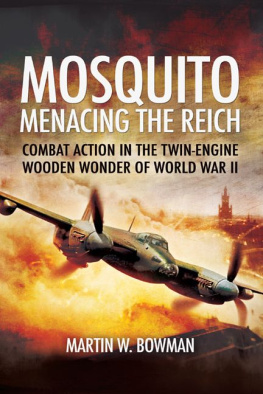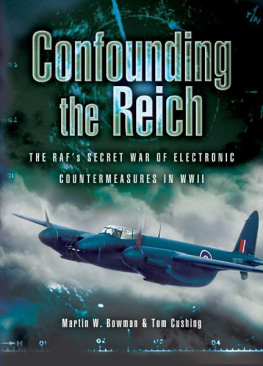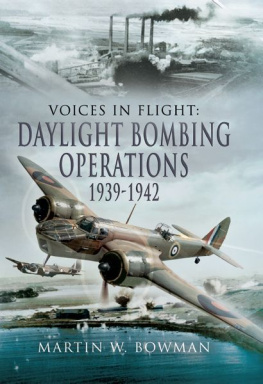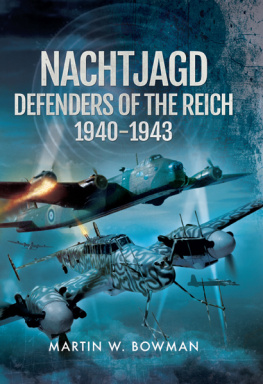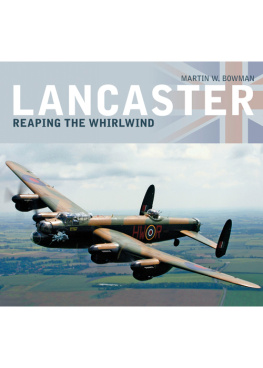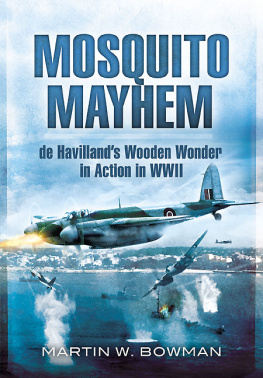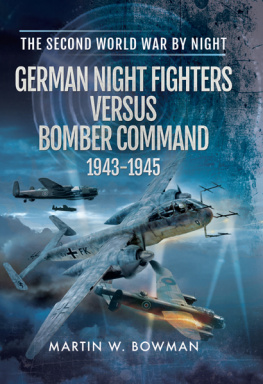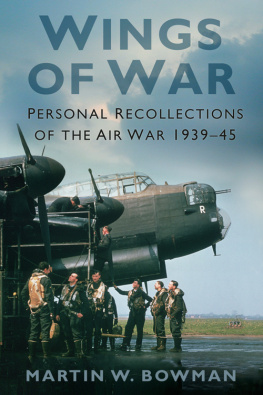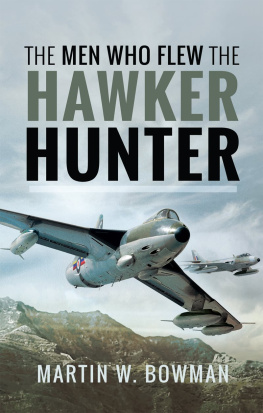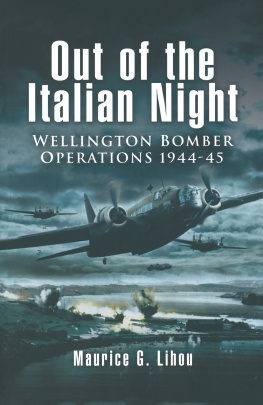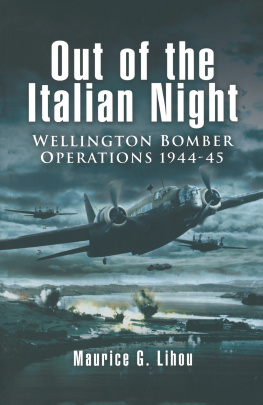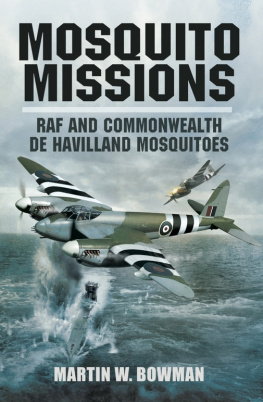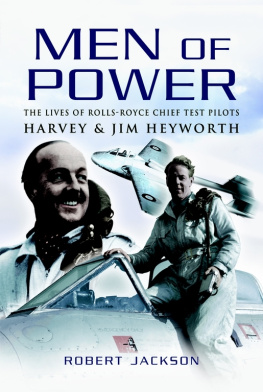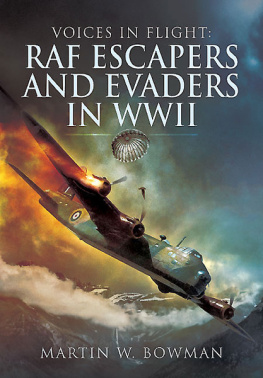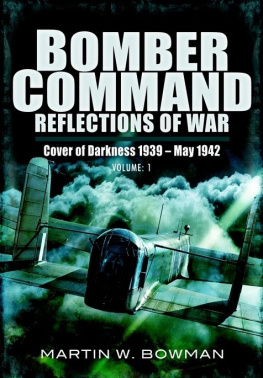Bowman - The Wellington Bomber
Here you can read online Bowman - The Wellington Bomber full text of the book (entire story) in english for free. Download pdf and epub, get meaning, cover and reviews about this ebook. year: 2015, publisher: Pen and Sword, genre: Non-fiction. Description of the work, (preface) as well as reviews are available. Best literature library LitArk.com created for fans of good reading and offers a wide selection of genres:
Romance novel
Science fiction
Adventure
Detective
Science
History
Home and family
Prose
Art
Politics
Computer
Non-fiction
Religion
Business
Children
Humor
Choose a favorite category and find really read worthwhile books. Enjoy immersion in the world of imagination, feel the emotions of the characters or learn something new for yourself, make an fascinating discovery.
- Book:The Wellington Bomber
- Author:
- Publisher:Pen and Sword
- Genre:
- Year:2015
- Rating:5 / 5
- Favourites:Add to favourites
- Your mark:
- 100
- 1
- 2
- 3
- 4
- 5
The Wellington Bomber: summary, description and annotation
We offer to read an annotation, description, summary or preface (depends on what the author of the book "The Wellington Bomber" wrote himself). If you haven't found the necessary information about the book — write in the comments, we will try to find it.
The Wellington Bomber — read online for free the complete book (whole text) full work
Below is the text of the book, divided by pages. System saving the place of the last page read, allows you to conveniently read the book "The Wellington Bomber" online for free, without having to search again every time where you left off. Put a bookmark, and you can go to the page where you finished reading at any time.
Font size:
Interval:
Bookmark:
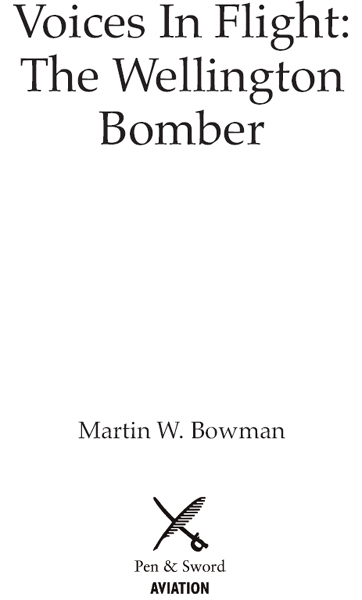
First Published in Great Britain in 2014 by
Pen & Sword Aviation
an imprint of
Pen & Sword Books Ltd
47 Church Street, Barnsley, South Yorkshire S70 2AS
Copyright Martin W Bowman, 2014
ISBN: 9781783831760
EPUB ISBN: 9781473853508
PRC ISBN: 9781473853591
The right of Martin W Bowman to be identified as author of this work
has been asserted by him in accordance with the Copyright,
Designs and Patents Act 1988.
A CIP catalogue record for this book is
available from the British Library.
All rights reserved. No part of this book may be reproduced or transmitted
in any form or by any means, electronic or mechanical including
photocopying, recording or by any information storage and retrieval system,
without permission from the Publisher in writing.
Typeset in 10/12pt Palatino
by GMS Enterprises
Printed and bound in England by
CPI Group (UK) Ltd, Croydon, CR0 4YY
Pen & Sword Books Ltd incorporates the Imprints of Pen & Sword
Aviation, Pen & Sword Family History, Pen & Sword Maritime, Pen & Sword
Military, Pen & Sword Discovery, Wharncliffe Local History, Wharncliffe
True Crime, Wharncliffe Transport, Pen & Sword Select, Pen & Sword
Military Classics, Leo Cooper, The Praetorian Press, Remember When,
Seaforth Publishing and Frontline Publishing.
For a complete list of Pen & Sword titles please contact
PEN & SWORD BOOKS LIMITED
47 Church Street, Barnsley, South Yorkshire, S70 2AS, England
E-mail:
Website: www.pen-and-sword.co.uk
Contents
Acknowledgements
I am indebted to all the contributors for their words and photographs. I am most grateful to the following: Les Allington; Wing Commander E. E. M. Angell; Les Aspin RCAF; Len Aynsley; Mike Bailey; Andy Bird; Theo Boiten; David K. Brearey; G. Stuart Brown RCAF; Don Bruce; Jim Burtt-Smith; John Callander; Arthur Chan Chandler; K. Clement; Norman Child; L. W. Collett; Bob Collis; A. J. Cook; Gerald F. Cooke; Rupert Tiny Cooling; Gary Cooper; E. M. Cox; Noel C. Croppi AFC; D. Cumming; Eric Day; G. B. Dick; Fred Dorken RCAF; Dr Colin Dring; Huby Fairhead; Henry Fawcett; Harvey Firestone; the late Charles Fox; Dr Paul A. Fox; Malcolm Freestone; Brian French; Peter Frost; Wally Gaul; Michael L. Gibson; Roy Gristwood; Gordon E. Haddock; Les Hallam; B. Hammond: Harold J. Hamnett RCAF; Captain T. A. Hampton AFC; the late Raymond Harding; S. Harle; Flight Lieutenant Keith Haywood RAF; Robin T. Holmes of the Loch Ness Wellington Project; Johnny Hosford; Alfred Jenner; Arthur Johnson; the late Group Captain Jones: R. Kirk; John O. Lancaster; Legion magazine; Tom Leonard RCAF; Squadron Leader Geoffrey N. W. MacFarlane; Reg Mack; J. A. Ian Mackay RCAF; Robert G. MacNeil RCAF; G. H. S. Malcolmson; the late Leslie Marlow; Eric A. Masters; Squadron Leader Rem Merrick, RAF Marham; Ian McLachlan; Nigel McTeer; Tomas Nagy; Des Norris; Major Stephen A. Oliphant USAF; Ernie Payne; Jeremy Petts; Stella Poynton; Charles Ray; A. H. Rawlings; Edward N. Reynolds RCAF; the RCAF Association; Albert E. Robinson; Flight Lieutenant W. Rusty Russell RAF; Hans-Heiri Stapfer; Terence Mansfield the Lord Sandhurst DFC; Maurice Scats Sandell; Sentinel magazine; Group Captain M. J. A. Shaw DSO; Squadron Leader R. C. Shepherd DFC; Leslie Sidwell; Alan G. Smith; Charles Stephens; Reg Thackeray DFM; Geoff Thomas; J. Tipton; Bryn Watkins; Jack Weekley; Brian Wexham of Vickers Ltd; Group Captain John N. Williams OBE DFC; Fred Wingham; James Woodruff.
Thanks also go to my fellow author, friend and colleague, Graham Simons, for getting the book to press ready standard and for his detailed work on the photographs; to Pen & Sword and in particular, Laura Hirst; and to Jon Wilkinson, for his unique jacket design once again.
Introduction
My heart is heavy, its throbbing pulsation soon to sink into the quiet of death. My skin is already torn, soon to express the symmetrical form of my skeleton, to expose it to the elements which will render it back into the fabric of the earth. Soon I shall be forgotten, both by those who had my welfare at heart and by those who feared my very existence. The moon is high, the night sky a canvas of blue; beneath me the earth is like a patchwork quilt of many colours. I am a Wellington, a crippled aircraft alone in the sky with no human pilot at my controls, no navigator at my chart table and no sound from my radio. My guns are now mere symbolic sentinels of defence. No sensitive fingers will nurse my descent into that watery grave that I know lies ahead; my last hour is now at hand, and I face it alone. An air lock in my fuel lines cut both my engines simultaneously and caused my crew to abandon me, as I twisted and convulsed, before I was able to regain the circulation of my life fluid. The automatic pilot had been engaged and my throttle set at cruising speed, so that when my engines started again I was able to level out and fly on - alone. My heart is broken, for they lost faith. From the first day of my working life I have been dependable, and no airman has ever lost his life or been injured by my inefficiency. I have survived over a hundred return journeys from Hells suburbs, and always they had faith in me until tonight. My controls move slowly and methodically, the stick making deliberate and precise movements as if held by unseen hands. I am tangible proof of mans skill and ingenuity, proof of his conquest of the air, but at the same time useless without the guidance of my creators. I shall be mentioned on the news bulletin in the morning, as one of our aircraft that failed to return. If only they could learn the truth, that here in a moonlit sky a lonely lady is trying to reach the shores of England, if only to prove that she did get back. I am losing height at the rate of one thousand feet per minute, and my altimeter is slowly moving back. A slight vibration has started throughout my geodetic fuselage; one of my engines needs synchronising. These are the first presentiments of the end, my course becoming more and more erratic as the off-beat motor pulls me against the automatic pilot.
Im well across the Channel now. The moons reflection in the water is accompanied by the shadow of a big bird in a futile migration. As I see the coast of England I have less than a hundred feet of space beneath me, and white-topped waves appear like sharks mouths awaiting their prey. It seems bitterly strange to me, that my end should be like this. Tonight I should have proved all that my scientific machinery was capable of achieving, but at the time when it was needed most, my crew had shown no faith. As my flying sped drops to a stall my tailfin and rudder still retain their graceful dignity, even after the first impact with the water which rips open my belly. My engines are silent now. In a few seconds the hissing of salt water against red hot metal will cease, and I shall sink to my final resting place.
Lonely Lady by D.A. Dugard, writing in Intercom; The Official Quarterly Magazine of the Aircrew Association, autumn 1983.
It was in March 1911 that the name of Vickers first became associated with heavier-than-air craft when an aviation department was formed in Vickers plant at Erith in Kent. By 1919 Vickers had consolidated its aircraft production solely at Weybridge and the design office was moved there from Imperial Court, Knightsbridge, where it had been since 1916. In the twenties the company built a single-engined civil transport and an amphibian aeroplane and biplane bombers and troop carrying aircraft for the RAF. In 1928 Vickers and Armstrong Whitworth merged into a new company called Vickers-Armstrongs Ltd and Supermarine Aviation Company of Southampton was also acquired. Four years earlier, in 1924, Vickers had established the Airship Guarantee Company and Mr. Barnes Neville Wallis became its Chief Engineer. After World War I Wallis felt that governmental attitudes to aviation left little scope for his advanced ideas for aircraft capable of establishing long-range routes and he had turned his back temporarily on aviation matters. On his return to the fold he was entrusted with the design of the airship which became known as the R100, in which he utilised for the first time the principle of geodetic construction. This form of lightweight, robust and seemingly-complex lattice structure was capable of withstanding severe punishment without its structural integrity being destroyed. At various times between 1908 and 1929 Vickers had produced a number of large airships for the Government, the last being the R100. This was intended for an experimental air service between the UK and the Commonwealth countries but it was scrapped following the crash of the R101 in October 1930.
Next pageFont size:
Interval:
Bookmark:
Similar books «The Wellington Bomber»
Look at similar books to The Wellington Bomber. We have selected literature similar in name and meaning in the hope of providing readers with more options to find new, interesting, not yet read works.
Discussion, reviews of the book The Wellington Bomber and just readers' own opinions. Leave your comments, write what you think about the work, its meaning or the main characters. Specify what exactly you liked and what you didn't like, and why you think so.


